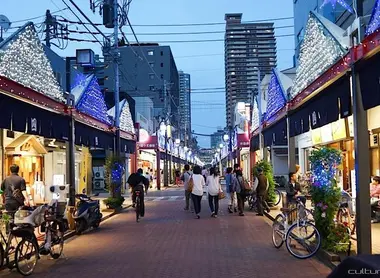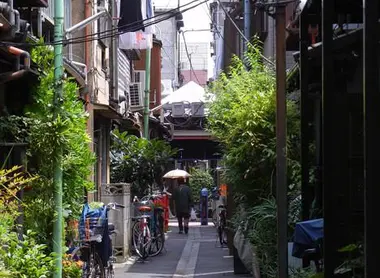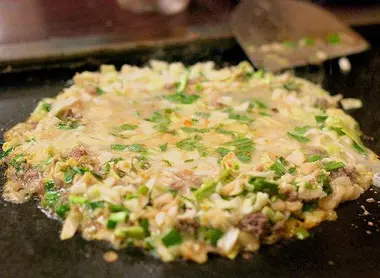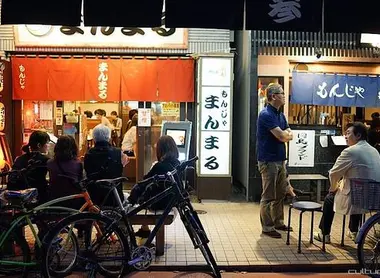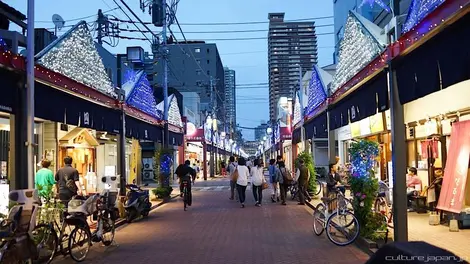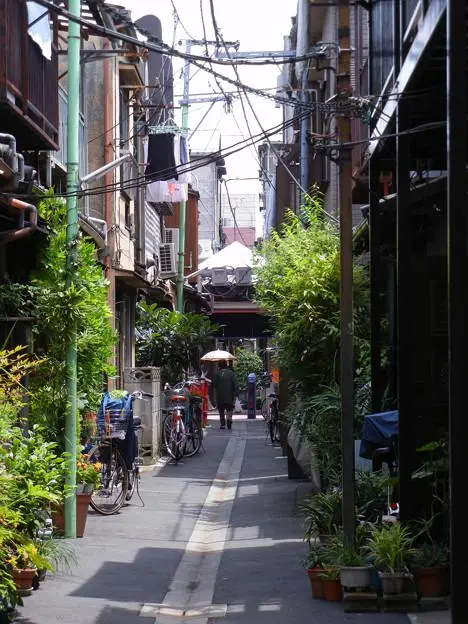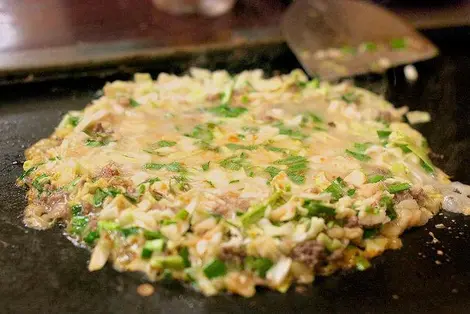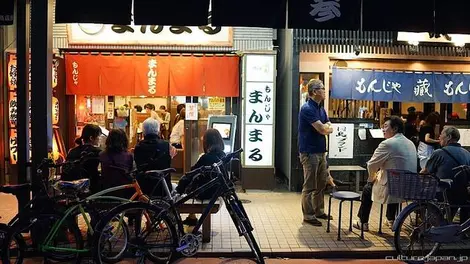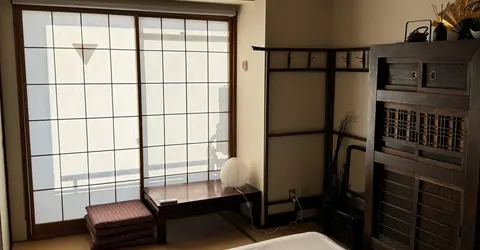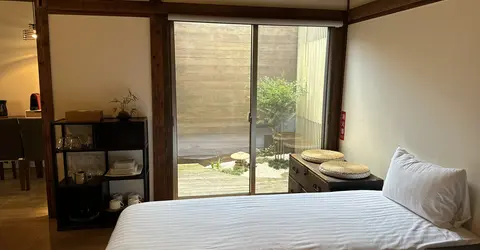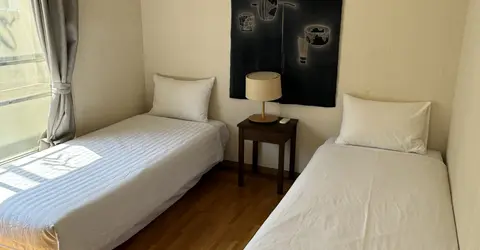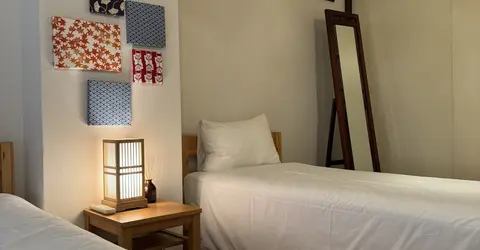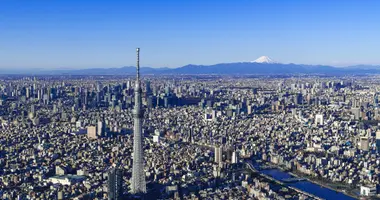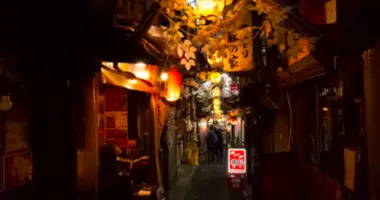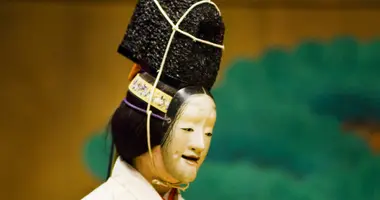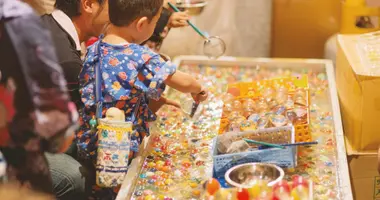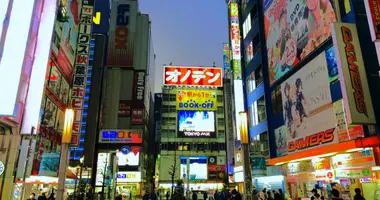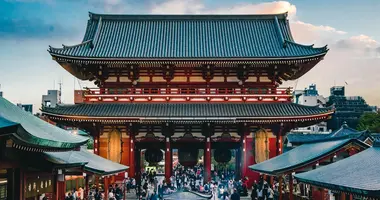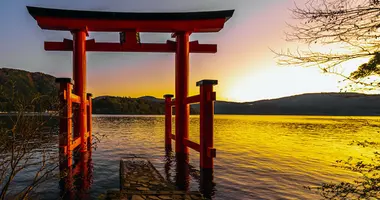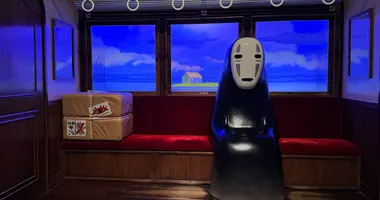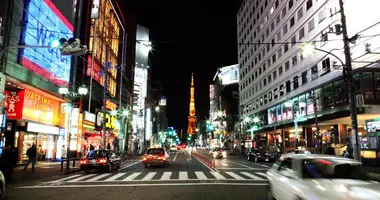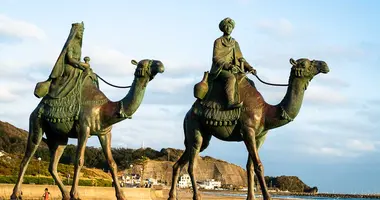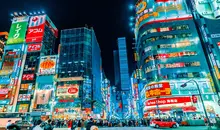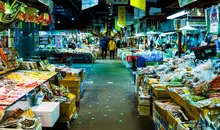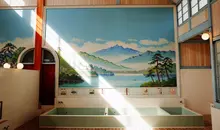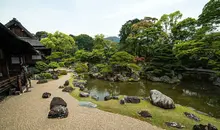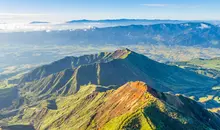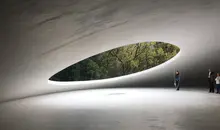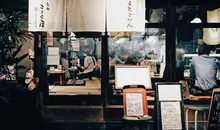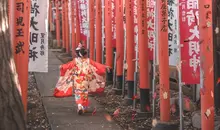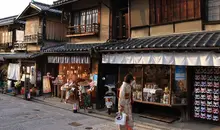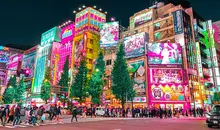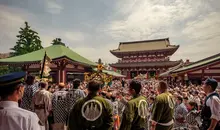Tsukishima 月島
L'île des gourmands
Artificielle, certes, Tsukishima l’est, puisqu’il s’agit d’une minuscule île gagnée sur la mer. Mais là s’arrête le qualificatif car ce quartier populaire est l’un des plus authentiques de Tokyo. Les maisons traditionnelles tiennent fermement et fièrement face à la construction effrénée de gratte-ciel résidentiels et les restaurants et boutiques du quartier ont gardé tout leur pittoresque.
Tsukishima (literally Moon Island) is located south of Tsukiji district, in the heart of the Chuo district. The island was created in 1892, with land dredged during the construction of a shipping canal in Tokyo Bay. Around 1940, a first access bridge, Kachidoki, was built, connecting it to the capital. It was not until 1988 that the area began to be served by the Yurakucho subway line; which perhaps explains its outdated appearance.
Tsukishima is visited for its tranquil and "quaint" atmosphere - the antithesis of modern Tokyo with its teeming, modern and trendy crowds - for its floral streets and antiquated shops. But the area is best known and frequented by people of Tokyo for its monjayaki, a specialty of Tsukishima.
The monjayaki (もんじ焼), sometimes abbreviated to monja, was originally a snack that children bought from candy merchants (dagashi-ya) after the war. It is now a full meal, and is considered the Tokyo version of the Osaka or Hiroshima okonomiyaki. It's a kind of gooey pancake which has several ingredients (vegetables, seafood, meat and even cheese or mochi) that you cook yourself on a hotplate installed in the center of the table.
Spoilt for choice
The main street, Nishinaka Dori, is also called Monja Street thanks to the impressive number of restaurants serving this specialty. There are about 80 punctuating Nishinaka Dori and its side streets. In the evening the main street is closed to traffic, to allow visitors to walk around and choose a restaurant in peace.
This piece of gastronomic history is so important that a "Monja Info Centre" even exists on the island, where you can get a map of the area with a list of restaurants, as well as brochures explaining how to cook monja. If you are afraid of your clothes smelling of food and smoke after your meal, know that (in a thoughtful and very Japanese touch) some restaurants offer plastic bags to protect coats and belonging from food smells!
If you're in Tokyo, try this unique dining experience.
